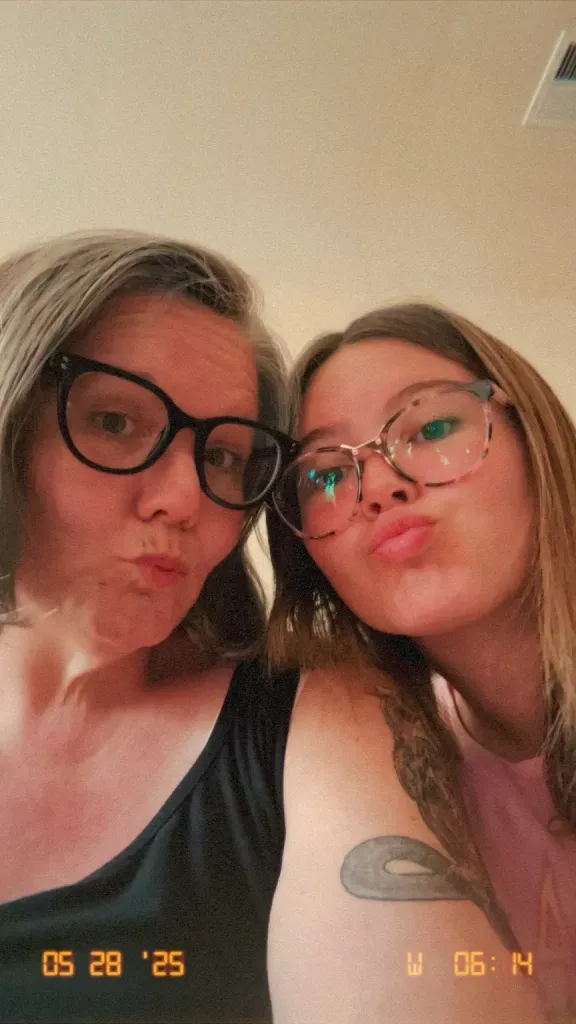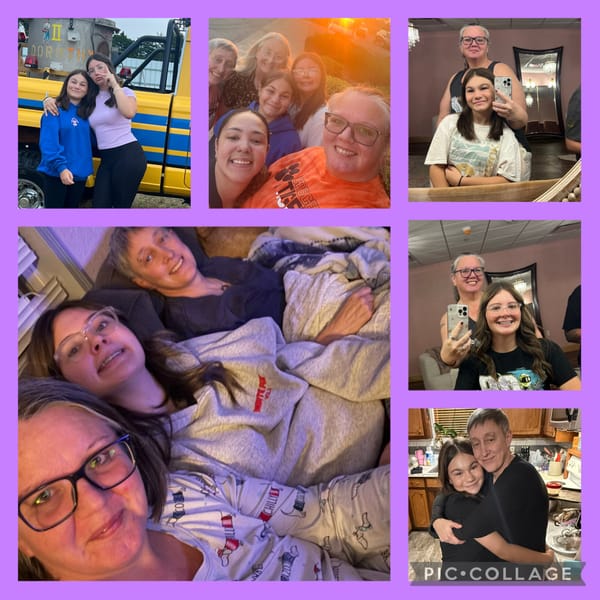ADHD Life Hacks: How to Stop Spiraling and Start Thriving

Living with ADHD? It’s like your brain is juggling flaming swords while riding a unicycle—on a tightrope—over a pit of forgotten tasks. It’s chaotic. It’s exhausting. But it’s not hopeless. Beneath the swirl of distractions and impulsive detours is a brain that’s wired for creativity, resilience, and untapped brilliance. You just need the right toolkit. That’s where self-care comes in—not the bubble bath, cucumber mask kind (unless that’s your thing), but the real-deal, ground-you-before-you-spin-out kind. This article is your ADHD survival guide. We’re talking routines that don’t make you want to scream, mindfulness that doesn’t feel like a punishment, and strategies that actually get how your brain works. You’ll learn how to build structure without strangling your spontaneity—and how to finally feel like you’re steering the ship instead of clinging to the rudder. So, grab a snack, maybe a fidget toy, and let’s dig into some ADHD-friendly self-care that doesn’t just help you survive the chaos—but thrive in it.
ADHD isn’t just about being distracted or fidgety—it’s a full-blown neurodevelopmental condition that messes with focus, impulse control, and energy levels in ways that can impact every part of life: school, work, relationships, you name it. It usually starts in childhood but definitely doesn’t pack its bags at adulthood. And here’s the kicker: ADHD doesn’t look the same for everyone. Some folks daydream their way through life, others bounce off the walls, and many do both—making one-size-fits-all advice pretty useless.
Thanks to science (and a bunch of brain scans), we now know that people with ADHD often have differences in the parts of the brain that handle decision-making, planning, and emotional regulation—especially the prefrontal cortex. Add in a few neurotransmitter imbalances (hi, dopamine and norepinephrine), and you’ve got a brain that’s wired just differently enough to need its own rulebook.
Living with ADHD means navigating life with a brain that’s playing jazz while everyone else is following sheet music. It’s not about being lazy, flaky, or undisciplined—it’s about working with a unique brain that needs tools, not shame. When you truly understand what’s going on under the hood, you can stop beating yourself up and start building strategies that help you thrive, not just survive.
Why Self-Care Isn’t Optional When You’ve Got ADHD
Let’s be real: if you’ve got ADHD, self-care isn’t some cute idea you sprinkle on top of your life like glitter. It’s survival. It’s sanity. It’s the difference between spiraling and actually feeling like you’ve got a grip (even if it’s a loose one). When your brain is running a mile a minute, taking care of your physical, emotional, and mental well-being isn’t just helpful—it’s essential.
Think of self-care as your personalized toolkit. When you prioritize it, you’re not just reducing chaos—you’re building a life that works with your brain, not against it. That means less burnout, more balance, and the ability to handle life without melting down over a lost to-do list.
Let’s talk structure. Routine is your secret weapon. ADHD can make schedules feel like quicksand, but building a simple, predictable rhythm gives your brain something solid to hold onto. Less guesswork = less stress. And if mindfulness and meditation sound too “woo,” hear us out: even a few quiet minutes a day can help calm the mental noise and improve focus. It’s not about perfection—it’s about finding moments of peace in the chaos.
But maybe the most underrated form of self-care? Being kind to your damn self. ADHD can drag your self-esteem through the mud—missed deadlines, forgotten appointments, a brain that just won’t “behave.” Practicing self-compassion means cutting the inner critic off mid-rant and replacing it with a little grace. Celebrate what is working. Recognize your effort, not just your output.
Self-care with ADHD isn’t a one-and-done deal. It’s a lifelong pact to show up for yourself—messy, brilliant, and human—as you are. Because you’re not broken. You’re just wired differently. And that’s not a flaw. That’s your origin story.
ADHD Isn’t Just “Squirrel!” — Here’s What Really Gets in the Way
Living with ADHD can feel like trying to do life with 47 browser tabs open—and five of them are playing music you can’t find. It’s not just about losing your keys or forgetting what you walked into the room for (though yes, that happens too). The struggles run deeper, messier, and more frustrating than people realize.
Let’s start with focus—or, more accurately, the lack of it. Staying on task can feel like wrestling a greased-up ferret. You want to finish the project, reply to the email, or do that one thing you’ve already snoozed ten reminders for… but your brain? It’s on a detour. This often means unfinished work, missed deadlines, and a pile of “why can’t I just get it together?” shame. Spoiler: it’s not about willpower—it’s about wiring.
Then there’s hyperactivity and impulsivity, ADHD’s chaotic sidekicks. Maybe you’re the leg-bouncer, the pace-around-the-room brainstormer, or the person who blurts things out before your brain checks if it’s a good idea. Sitting still or “just relaxing” can feel impossible, especially when your body’s revved up like it had three Red Bulls before breakfast. Impulsivity, meanwhile, is the reason your Amazon cart gets mysteriously full at 2 a.m. and you said something super awkward in a meeting (again).
And here’s the big one people don’t talk about enough: emotions. ADHD isn’t just about focus—it’s about feeling everything, all at once, at volume 100. Frustration, anxiety, anger—they show up big and fast. Add in struggles with executive function—like organizing, planning, or deciding what to do first when everything feels urgent—and it’s easy to feel like you’re constantly behind, overwhelmed, and out of control.
The truth? These challenges are real. And understanding them isn’t about making excuses—it’s about making space. Space for better tools, better support, and better self-care strategies that actually work for your brain.
Build-Your-Own Self-Care Routine (Because One-Size-Fits-None)
Let’s be honest: managing ADHD isn’t about finding some magical routine that works for everyone—it’s about building one that works for you. And that means tossing out the “perfect morning routine” videos and starting with a little self-inventory. What’s tripping you up? Where do you feel like you’re running on fumes? That’s your starting point—not some Pinterest checklist.
Creating a routine that actually sticks means embracing structure and flexibility. (Yes, both.) Start with the basics: wake-up time, meals, movement, and work blocks. Add in regular breaks, some “stare at the wall and breathe” moments, and maybe even time to do nothing on purpose (wild, right?). Tools like planners, phone alarms, or even sticky notes on your forehead—whatever helps you stay on track—are fair game.
But don’t stop at schedules. ADHD brains are often overloaded, so weaving in mindfulness is like giving your brain a spa day. No, you don’t have to chant under a waterfall. Try a few deep breaths. A stretch. A guided meditation you half-pay attention to. These little resets can help you feel grounded instead of scattered. And if you’ve got the space, create a cozy little corner for your recharge time—even if it’s just a chair that doesn’t have laundry on it for once.
The goal here isn’t to become some productivity robot. It’s to create a routine that makes your life easier, not more stressful. One that helps you show up, stay centered, and keep moving forward—even if some days it’s more of a shuffle than a strut.
Mindfulness for the Easily Distracted (Yes, Even If Meditation Feels Weird)
Let’s just say it: meditation can feel kinda silly—especially when your ADHD brain is doing cartwheels and your to-do list is screaming in the background. Sitting still and “focusing on your breath” might sound like a joke when your thoughts are bouncing around like popcorn in a hot pan. But here’s the thing: mindfulness can work for ADHD—it just might need a little tweaking to fit your brain.
Mindfulness isn’t about silencing your thoughts or achieving Zen monk status. It’s about checking in with yourself without judgment—learning to notice your thoughts, emotions, and distractions without getting yanked around by them. For ADHD brains, that’s gold. It can help you slow the mental chaos, manage impulsivity, and stay (somewhat) grounded when your attention is ready to sprint out the door.
Start simple. Mindful breathing is your go-to. Find a spot where you won’t be interrupted—yes, even the bathroom counts—and just focus on your breath. In, out. That’s it. Your mind will wander. That’s normal. Just bring it back, like you’re gently nudging a puppy back onto the sidewalk. No big deal, no inner monologue needed.
Another solid option? The body scan. Lie down somewhere comfy, close your eyes, and mentally check in with each part of your body—starting at your toes and working your way up. It’s like giving your nervous system a roll call. You’ll start to notice where you’re holding tension (hello, clenched jaw), and that awareness alone can help you release it.
The point isn’t perfection—it’s practice. A few minutes a day can genuinely help you regulate emotions, reduce anxiety, and build that pause button your brain’s been missing. Will it feel awkward at first? Probably. But with a little consistency (and maybe a guided app to help), you might just find it’s your new ADHD-friendly secret weapon for staying centered in the chaos.
Time Management for ADHD Brains (Because “Just Focus” Isn’t a Strategy)
If you’ve got ADHD, you probably already know that time has no meaning. It’s either now or not now, and somehow the entire day disappears while you’re “just checking one thing real quick.” That’s why time management isn’t just helpful—it’s your secret weapon against chaos, burnout, and the dreaded 11:59 p.m. panic sprint to finish something that was due last week.
The good news? You don’t have to become a hyper-organized productivity bot. You just need a few ADHD-friendly tricks that help you wrangle your time without losing your mind.
Start by breaking big tasks into smaller, bite-sized steps. (Think: “write report” becomes “open laptop,” “write intro,” “eat snack,” “write one paragraph,” etc.) The smaller the step, the less overwhelming it feels—and the more likely you are to actually start. Bonus points if you use a paper planner, a digital calendar, or even a whiteboard that makes you feel like a mad genius plotting world domination.
Timers are your best friend here. The Pomodoro Technique (25 minutes of work, 5-minute break) is especially ADHD-friendly because it gives your brain a finish line. No more endless “I’ll just work until I’m done” loops that end in scrolling TikTok in a shame spiral. Alarms, reminders, and designated time blocks can also keep you on track—and yes, you can schedule in snack time.
Speaking of snacks… don’t underestimate the power of nutrition. Eating balanced meals with protein and complex carbs can help your brain focus better and avoid that mid-afternoon energy crash that turns “I’ll do it in 10 minutes” into “Oops, it’s tomorrow.” Food is fuel—and your ADHD brain runs best on the premium stuff, not just coffee and vibes.
And finally, carve out a workspace that’s low on distractions and high on “get stuff done” energy. Whether that’s a desk, a corner of the couch, or the one chair not covered in laundry, having a dedicated spot can make a big difference.
You don’t need to overhaul your life overnight—just start small, stay curious, and keep adjusting until you find a rhythm that works for you. ADHD time management isn’t about perfection. It’s about creating enough structure to stop feeling like you’re always behind—and maybe even getting ahead once in a while.
Finding Your People: Building Support That Gets You
ADHD can feel like you’re constantly paddling upstream with a spaghetti noodle—but you don’t have to do it alone. Building a support system isn’t just helpful—it’s the glue that holds you together on the messy days. Whether it’s family, friends, your therapist, or that ADHD meme group you secretly love, finding people who get it can be a total game changer.
Start with your inner circle. Let your people in on what ADHD actually looks like for you—not just the stereotype. Being real about your challenges helps them show up in ways that actually support you (instead of offering “helpful” advice like “just focus more”). And don’t sleep on the pros—therapists, ADHD coaches, and mental health professionals can help you create custom strategies that make sense for your brain, not someone else’s Pinterest version of productivity.
Online communities, support groups, and forums are like a virtual hug from people who’ve been there. These spaces are full of lived experiences, practical hacks, and encouragement that hits different when it comes from someone who knows the struggle. Plus, ADHD-specific organizations offer a goldmine of resources—think webinars, workshops, downloadable guides, and the occasional “aha” moment that makes your week. Finding your people means building a village of support—and that village can help you thrive.
Digital Lifelines: Tools and Apps That Actually Help
Let’s be real—your phone already goes everywhere with you, so why not make it your ADHD sidekick instead of your distraction enabler? There’s a growing list of apps that aren’t just pretty—they’re practical, ADHD-friendly, and surprisingly motivating (some even turn your to-do list into a video game. Yes, really).
Start with the basics: digital planners like Google Calendar, Todoist, and Trello are your besties for organizing chaos. You can color-code, set reminders, and map out your day like a productivity wizard. Then there’s Forest, the app that rewards your focus by growing cute virtual trees—perfect for those “I’ll just check Instagram real quick” moments. And Focus@Will? It serves up music that keeps your brain in work mode instead of squirrel mode.
Need help building new habits or keeping track of your wins? Try Habitica, where your habits earn you points like you’re leveling up in a game. Or Streaks, which turns consistency into a mini dopamine hit. For calming the mental chatter, Headspace, Calm, and Insight Timer offer guided meditations that don’t require you to sit like a monk for an hour. They’re great even if you still think meditation is a little woo-woo (we get it—it can feel silly at first, but weirdly, it works).
These tools aren’t magic fixes—but when used consistently, they become powerful allies in your self-care routine. The goal isn’t perfection—it’s progress with a little tech support.
Conclusion: Owning Your ADHD Like the Brilliant Chaos Unicorn You Are
ADHD is a wild ride—one full of detours, distractions, deep dives, and a whole lot of “Wait… what was I doing again?” But it’s not a broken version of normal. It’s a different operating system. And once you learn how to work with it instead of fighting it, everything starts to shift.
With the right strategies—think structure, support, self-compassion, and maybe a good playlist or three—you can turn the chaos into clarity. You can stop surviving and start thriving. Yes, really.
Remember: ADHD isn’t just about challenges. It also brings creativity, passion, hyperfocus superpowers, and a different lens on life that can lead to brilliance no one else sees coming. By embracing who you are (messy brain and all), building your support squad, and using self-care that actually fits, you’re not just coping—you’re rewriting the rules for what thriving looks like.
So, keep going. Keep experimenting. Keep showing up for yourself. The road isn’t linear, but it is yours—and it’s full of potential, even if it takes a few detours to get there.
By: Jess E




